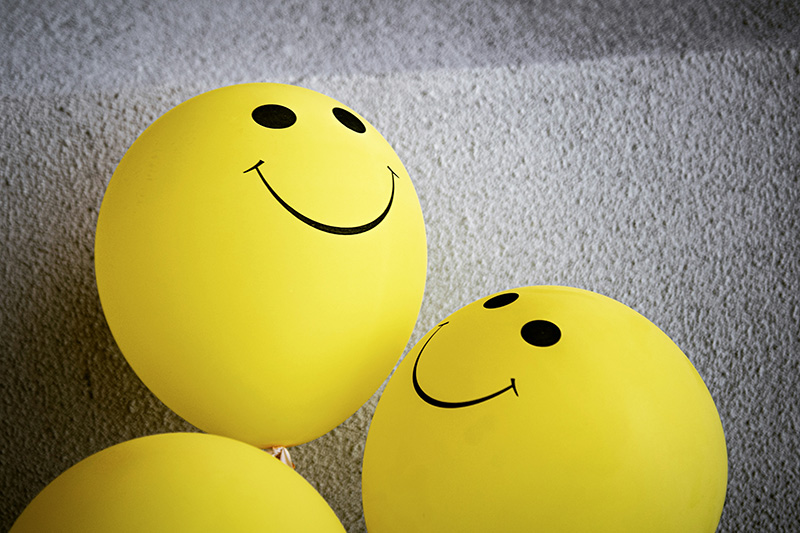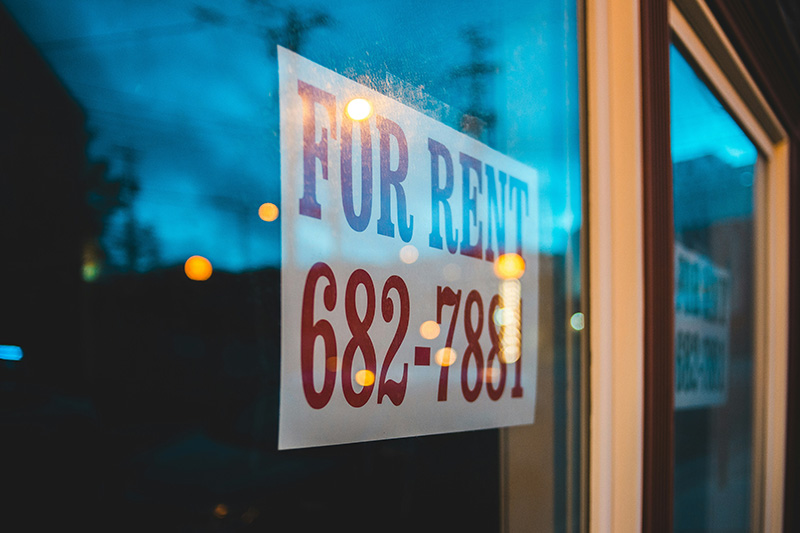
As property owners, understanding the significance of tenant retention rates is vital if you expect to have sustained success in the competitive rental property market.
Effective tenant retention strategies safeguard against tenant turnover and contribute to maintaining a stable & profitable rental property.
Here are 12 proven strategies and tactics we use to increase tenant retention and address the key factors influencing the rental housing market.
What is Tenant Retention?
Tenant retention refers to the practice of keeping existing tenants in a rental property for an extended period of time.
It involves implementing strategies and measures to encourage tenants to renew their leases and remain in the property, minimizing turnover and fostering a stable, long-term occupancy.
Successful tenant retention contributes to a positive and thriving rental community while benefiting property owners through consistent rental income.
Why is Tenant Retention Important?
Tenant retention is important because it helps property owners maintain a steady income without the hassles and costs of advertising rentals, screening new tenants, and onboarding them into your rental property.
Retaining tenants for the long term also saves money on things like advertising and preparing a property for new occupants.
If you have stable, long-term residents, you’ll also foster a positive community vibe. People get to know their neighbors over time, which creates better living experiences and boosts your property’s local reputation.
12 Tenant Retention Strategy Tips for Landlords

1. Clear Communication for Tenant Retention
Tenant retention begins with good communication. Initiate transparent communication channels to convey lease terms, set expectations, and share pertinent information about scheduled cleanings, maintenance, or changes.
Tenants become disgruntled when they are surprised by things they weren’t told about. Be proactive about communicating with your residents – especially when it comes to expectations and lease requirements.
Use appropriate communication channels for 2024 like email, text, and phone. Today’s clients don’t want to sift through their mailbox to find out about the next parkade or window cleaning.
When you’re moving your tenant in, review all of the most pertinent information with them. Make sure they understand the rent collection policy and how utilities should be handled. Your tenants need to know what they’re responsible for in terms of maintenance. Be consistent, open, and responsive.
Consider providing a welcome packet or an orientation so tenants aren’t unsure about how to request maintenance or ask a question about rent.
Check in on your tenants every so often – they shouldn’t hear from you only when something is wrong.
A clear dialogue establishes trust, making tenants feel informed and valued throughout their current lease – and helping you improve your tenant retention rates.

2. Promptly Handle Maintenance and Repair Requests
Every property manager should swiftly address maintenance requests to enhance tenant satisfaction.
A well-maintained property not only attracts new tenants but also ensures current tenants are content, contributing to higher tenant retention rates.
We have seen a lot of data and surveys that say tenants are most likely to move when their maintenance requests are not handled promptly or thoroughly. This is a terrible way to lose a tenant. Even if it’s a routine fix that you don’t think is very important, it’s probably important to your tenants.
Make pest control a priority. Encourage your tenants to report maintenance issues right away so there aren’t any deferred or unreported problems that threaten to grow into more expensive issues.
No one wants to live in a deteriorating property. Keep it in excellent condition and be responsive when repair requests come in.
Tenants will notice how quickly you respond and take action, which will show them whether or not you truly value them as a resident. Your responses to maintenance and repair who tenants whether you are committed to providing a safe, habitable, and attractive home – or are just there to make money.

3. Offer Lease Renewal Incentives
Encourage lease renewals by providing tenants with appealing incentives, such as reduced rent rates, complimentary upgrades, or if the market is extremely competitive – a month’s rent free.
Perhaps you can offer to install a new appliance, pay for their internet, or upgrade the backyard with new landscaping.
These thoughtful offerings not only make the renewal decision more enticing for tenants but also demonstrate your commitment to their satisfaction.
By recognizing and rewarding tenant loyalty, you not only foster a positive relationship but also contribute to a sense of appreciation, making it more likely for tenants to extend their lease and remain valuable, long-term residents in your property.
4. Actively Encourage Tenants to Renew Their Leases
Putting incentives aside, you can actively encourage tenants to renew their leases by highlighting the benefits of staying.
Emphasize the convenience of a familiar place, a great neighbourhood, avoiding the costs & hassles of moving, and working with a trusted & proactive property manager.

5. Strategic Rate Management
To retain tenants in a competitive market, manage your rental rates strategically, considering market values and economic conditions.
Most tenants expect that their rent will be raised every year. In BC, the provincial government determines how much you can increase your rental rates based on CPI inflation.
As a rental property owner, you want to maximize what you earn and keep your rental value aggressive. However, if you raise the rent without looking at the current market value, your tenant may look elsewhere – costing you additional fees and potentially leading to renting at a lower amount than you were already receiving.
Sometimes not giving a rent increase on the anniversary is the best option. It won’t destroy your ROI if you keep your rental increases lower.
Tenants looking for value will have a hard time leaving when you’re sensitive to economics.

6. Proactive Tenant Screening for Long-Term Tenants
Invest time in thorough tenant screenings to attract and retain good tenants, creating a solid foundation for a stable rental property. Taking a proactive approach involves a careful evaluation of applicants, considering factors such as rental history, financial stability, and references.
Selecting tenants who align with your expectations and guidelines reduces the risk of tenant turnover.
If you own a multi-family property, your goal should be to create a community of reliable, long-term residents who contribute to the positive atmosphere of the property.
Strategic tenant screening process ensures the property is consistently occupied by tenants committed to the long-term well-being of the rental community.
7. Create a Positive Living Environment
Foster a positive living environment through community-building initiatives, excellent customer service, and ensuring the common areas of your property like gyms, pools, gardens, and laundry rooms are well-maintained.
A positive and social atmosphere increases the likelihood of tenants feeling content and happy in their rental unit. By organizing community events, providing exceptional customer service, and maintaining the property’s aesthetics, property owners cultivate a sense of belonging among tenants.
8. Implement Excellent Customer Service Practices
Offer top-notch customer service with quick responses to inquiries, personalized assistance, and prompt resolution of tenant requests. Maintaining a high standard of service fosters tenant satisfaction and establishes a strong rapport, increasing the likelihood that tenants will choose to renew their lease.
Consistent and exceptional customer service is a key factor in building trust and loyalty, contributing to a thriving and harmonious rental community.

9. Maximize Tenant Retention Through Rent Payment Flexibility
In tough economic times, consider flexible rent payment options to accommodate your tenants’ unique financial situations.
Offering various payment plans makes it easier for tenants to manage their rent payments, which can help you save money by minimizing turnover and avoiding the costs of finding a new tenant.
Being a little bit flexible shows your commitment to your tenant’s personal wellbeing, which can lead to a respectful and valuable long-term relationship.

10. Prioritize Long-Term Tenant Relationships
Building and prioritizing long-term relationships with tenants is a cornerstone of successful property management. Cultivating a positive landlord-tenant relationship goes beyond the transactional aspects of leasing; it involves understanding tenant needs, being responsive to concerns, and fostering open communication.
A landlord who sincerely values their tenants is more likely to create a sense of community and trust, contributing to tenant loyalty. Fostering long-term relationships makes great tenants more likely to stay, while creating a positive reputation in the your local community.
Regular communication, addressing concerns promptly, and showing genuine care contribute to a thriving, long-term relationship between property owners and tenants.
11. Utilize Proven Strategies for New Tenant Onboarding
Creating a positive onboarding experience for new tenants involves several practical tactics.
First, provide a comprehensive welcome package that includes essential information about the property, such as maintenance procedures, contact details, and community rules.
Secondly, schedule a thorough walkthrough of the property to familiarize tenants with key features and address any immediate questions.
Maintain open communication channels during the initial weeks, ensuring tenants feel supported as they settle in.
Finally, consider implementing a welcome event or community gathering to introduce new tenants to their neighbors and foster a sense of belonging. These practical steps set the stage for a lasting and positive tenant-landlord relationship.

12. Continuous Improvement Through Tenant Surveys
Regularly conduct tenant surveys to gather tenant feedback on their experience. Use this feedback to identify areas for improvement, ensuring that your property management strategies evolve to meet and exceed expectations – keeping tenants happy for the long-haul.
Elevating Tenant Retention Rates for Long-Term Success
Maximizing tenant retention is crucial for any landlord or property owner seeking to increase the profitability of their real estate investments.
By incorporating these 12 tenant retention strategies, property owners can not only increase tenant satisfaction, but also secure a steady stream of rental income and foster a positive reputation in the competitive rental property market.
Vantage West | Your Okanagan Valley Property Manager
Discover the Vantage West advantage for Okanagan Valley property management – 2 time winner of the Consumer’s Choice Award in Kelowna for best property manager. As landlords ourselves, we understand the unique challenges of property care and financial growth.
Unlike other firms, we focus on your investment goals, offering full-service property management and expert advice. Our commitment to long-term tenant relationships can help you maximize your tenant retention rate and turn your real estate assets into passive, hands-off investments.
 If you’d like more information on tenant retention strategies, or you’re interested in working with us, contact us at Vantage West Property Management today.
If you’d like more information on tenant retention strategies, or you’re interested in working with us, contact us at Vantage West Property Management today.
